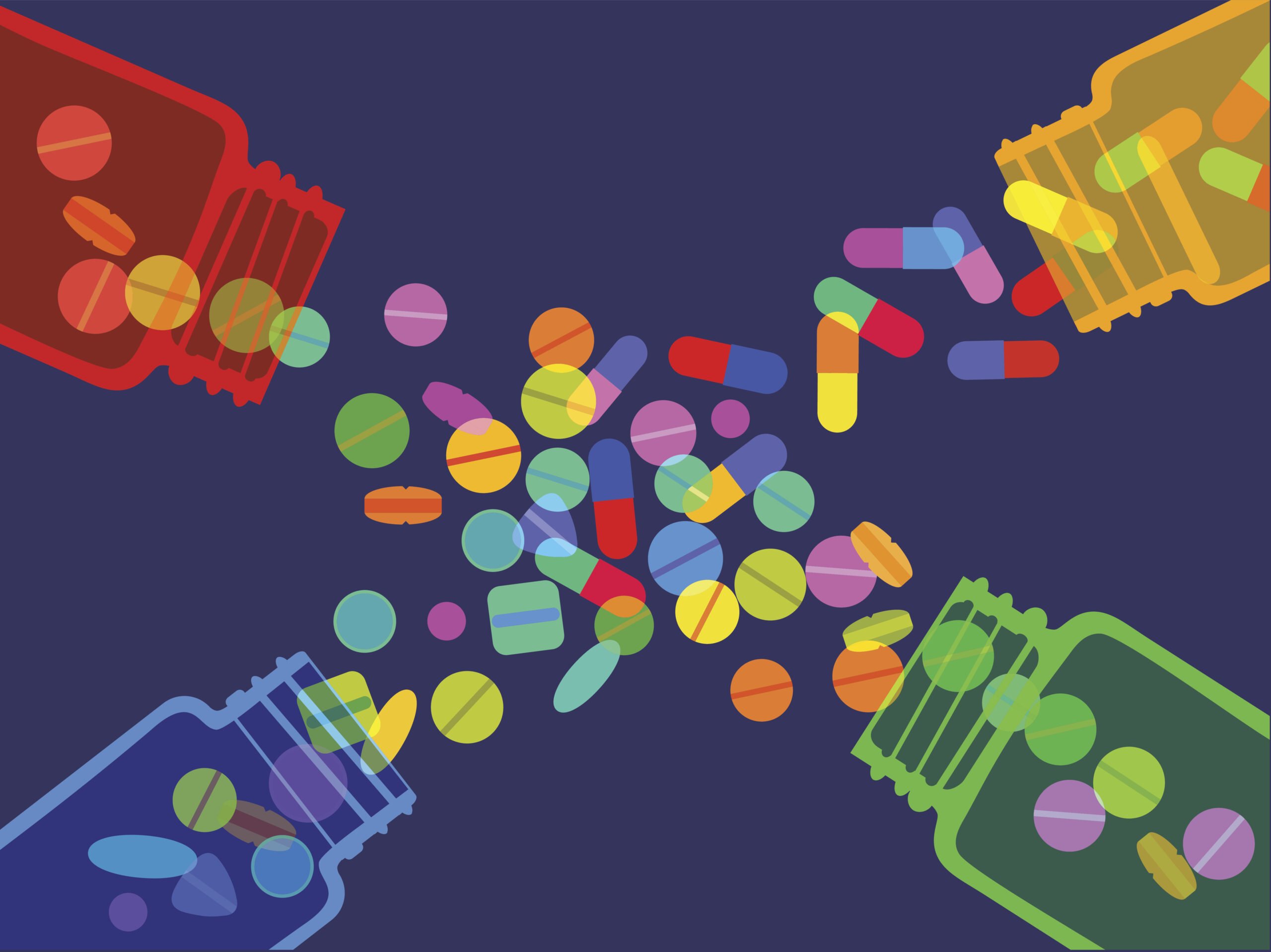Pain is an unpleasant sensory and emotional experience associated with actual or potential tissue damage. It is an experience that affects, and is affected by, both the mind and the body. It involves the perception of a painful stimulus by the nervous system and the reaction of the individual patient to this.
It is increasingly recognised that pain encompasses not only physical aspects, but also a psychological component. Understanding pain fully involves understanding the psychological factors that influence the perception of pain, in addition to just the pathological mechanisms of pain conduction.
Psychological aspects that often lead to pain intensification have been found to include:
<p class=”listBULLETLISTTEXTMIstyles”><strong>Distress surrounding change in body function</strong>
A patient’s perception of pain following a cruciate tear may be intensified by the fear that they may not be able to play sport again.
<p class=”listBULLETLISTTEXTMIstyles”><strong>Fear of pain </strong>
Patients may anticipate or expect pain, such as when a dressing is being changed, which has previously been painful. The fear of pain may lead to the pain sensation being more severe than the local trauma should precipitate.
<p class=”listBULLETLISTTEXTMIstyles”><strong>Feelings of helplessness and dependency</strong>
Patients with pain that is disabling may be further burdened by a sense of helplessness and dependency on others. This is often seen in pain at end-of-life, where overall distress about burdening family members can lead to pain intensification.
<p class=”listBULLETLISTTEXTMIstyles”><strong>Mood disturbance and anxiety</strong>
Often, where patients are hormonal, or perhaps intensely hungry, their pain — irrespective of the location — may become more severe. This is thought to be a psychological phenomenon, such that when the mood disturbance or hunger is reversed, the pain will recede.
Social and spiritual aspects are also considered to impact on the experience of pain.
Experience in palliative care has taught this author that often, patients experience physical pain as a result of social changes, including a sense of loss of their role in a family, loss of their career or loss of their interpreted status in society. Spiritual aspects that contribute to physical pain may include a patient’s distress at the search for the meaning of their illness or injury.
Chronic pain may be associated with significant changes in lifestyle, functional ability and personality. Management is challenging, as it requires careful assessment, not only of the intensity and nature of pain, but also of the degree of psychological distress that is present. In essence, pain is a subjective experience and the severity of an individual’s pain is relative to their own perception and tolerance.
<h3 class=”subheadMIstyles”>Pain assessment</h3>
Accurate assessment of a patient’s perceived pain is recommended before a decision is made on the choice of analgesic to administer. The natural history of the patient’s pain should always be assessed.
Figure 1 is a useful pain assessment tool, which combines two well-known pain assessment tools — a numerical rating scale (NRS), and a visual analogue scale (VAS). The patient can demonstrate their pain in a number of ways:
1) A number between 0 and 10 can be chosen, with 0 indicating no pain, and 10 indicating the most severe pain possible.
2) A colour on the scale from green (no pain) to deep red (severe pain) can be selected.
3) One of the faces that express mild-to-severe symptoms of pain can be chosen, as patients may identify best with an expression, rather than a number or colour.
This is a universal pain scale, as it can be used for pain assessment in children, as well as in individuals with learning difficulties. Those with speech difficulties, for example due to aphasia or dysphasia, can point to the tool to describe their pain. The use of colour, as well as ‘happy’-‘sad’ faces and numbers, makes this tool visually appealing and adaptable to different patient needs.
<h3 class=”subheadMIstyles”>LESS PAIN patient interview</h3>
It is important to listen to patients when discussing pain and ask careful, targeted questions. Often, patients will use familiar expressions to describe their pain, and these may not always be accurate. For example, often a patient will report that they are ‘in pain all the time’.
It is important to explore such statements further with the patient. Careful questions should be asked to establish the true level and frequency of pain — including questions about the patient’s lifestyle and mood and how their pain affects them.
The University College London School of Pharmacy has devised an effective questioning tool — ‘LESS PAIN’ — to enable fruitful conversations about pain by asking eight key questions.
The LESS PAIN tool (see Figure 2) has been developed to aid in the assessment of pain and to guide the provision of appropriate pain relieving interventions.
<h3 class=”subheadMIstyles”>Pain management</h3>
Mild-to-moderate pain can be managed in the community setting, using basic non-pharmacological pain management advice and over-the-counter analgesics.
Particularly where pain is thought to have a psychological component, non-pharmacological interventions play an important role in the management and resolution of pain. ‘Comfort therapy’ is a broad term which refers to the provision of soothing therapies that often aid with emotional distress or psychological factors, towards improving pain control.
Examples of comfort therapy include:
<p class=”listBULLETLISTTEXTMIstyles”>Companionship (where patients experience heightened pain due to feeling lonely or isolated).
<p class=”listBULLETLISTTEXTMIstyles”>Lotions/massage therapy (demonstrated to reduce anxiety).
<p class=”listBULLETLISTTEXTMIstyles”>Meditation (mindfulness has demonstrated analgesic benefit).
<p class=”listBULLETLISTTEXTMIstyles”>Music, art, or drama therapy.
<p class=”listBULLETLISTTEXTMIstyles”>Pastoral counselling (particularly for those with spiritual distresses).
<p class=”listBULLETLISTTEXTMIstyles”>Individual, family or group counselling.
<p class=”listBULLETLISTTEXTMIstyles”>Transcutaneous electrical nerve stimulation (TENS; thought to provide relaxation and reduce psychological distress).
<p class=”listBULLETLISTTEXTMIstyles”>Acupuncture.
The World Health Organisation (WHO) Pain Ladder (Figure 3) was originally designed for relief from cancer pain, but the step-wise approach has been used for relief of non-cancer pain as well. The pain ladder suggests using non-opioids and adjuvants initially, including paracetamol, non-steroidal anti-inflammatory drugs (NSAIDs) and topical agents.
Importantly, if one ‘Step 1’ agent is not found to control pain, an alternative from this Step can be used, unless contraindicated. As a general rule, topical analgesic agents are the least likely to cause side-effects due to their limited systemic absorption. Paracetamol is also very well tolerated by the young, as well as the elderly, and is a useful choice for patients who are unable to take NSAIDs.
Use of NSAIDs is cautioned in patients with a history of cardiac disease, asthma, renal impairment or gastric ulceration. As a general rule, their utility decreases with increasing age, given that cardiac disease, renal impairment and gastric ulceration are all associated with increasing age.
Certain over-the-counter preparations also contain codeine, which is a weak opioid that may be introduced at Step 2 of the WHO Pain Ladder. The codeine content of over-the-counter products differs, with the best-known products containing codeine as follows:
<p class=”listBULLETLISTTEXTMIstyles”>Solpadeine (soluble/capsules): 8mg of codeine per tablet.
<p class=”listBULLETLISTTEXTMIstyles”>Nurofen Plus: 12.9mg of codeine per tablet.
As per the national guidelines, codeine products should only be used when necessary and only when a non-opioid analgesic, eg, paracetamol, aspirin or ibuprofen, have not proven sufficient to relieve symptoms. If recommended, codeine medicines should be used for the shortest time possible and for no longer than three days without medical supervision.












Leave a Reply
You must be logged in to post a comment.